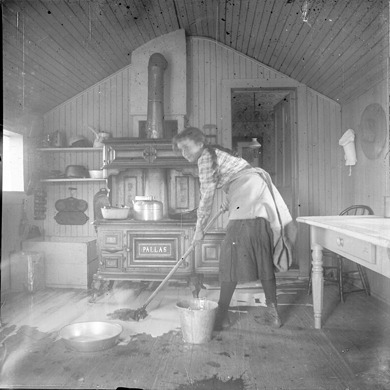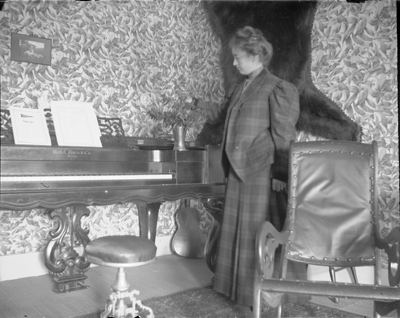Story
Child Photographers
The photographs of Eugenia Ransom Kennicott
Our current exhibition Toys of the ‘50s, ‘60s and ‘70s got me thinking about unconventional toys. Could a camera be considered a toy?
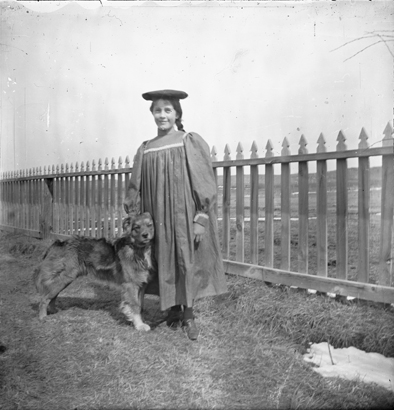
Photographer Eugenia R. Kennicott at age 12, posing in her yard with her dog Penny. She wore loose clothing most of the time in order to hide her back deformities.
I recently processed the Eugenia R. Kennicott photographs collection (Ph.00240) which consists of 63 glass plate negatives photographed by Eugenia during the years 1899-1905 when she was a teenager.
Eugenia Ransom Kennicott was born on January 19, 1883 and when she was two years old, she contracted spinal tuberculosis, a disease that deformed her back. Due to Eugenia’s physical disabilities and limited mobility, she could not play outside like other children her age. So her father bought her a camera and darkroom equipment in 1899.
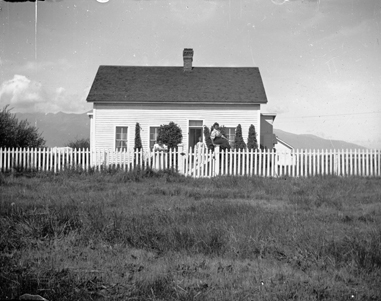
View of the Kenicott ranch in Westcliffe with a girl, possibly Anna Kennicott, posing along the fence.
Eugenia used the camera to document the life around her including her home life, her family, and her friends. The photographs she shot reveal how was close she was to her younger sister Anna Townsend Kennicott Rogers (1887-1963), and what everyday life was like for teenagers around the turn of the century. She documented Anna’s daily activities such as chores, reading, gardening, playing the piano, and sometimes dramatic playacting with friends. They lived with their father Frank Kennicott (1842-1914) and mother Mary Azuba Smith (1854-1939) on a 160 acre ranch north of Westcliffe (Custer County). Frank was a cattle rancher and built a two-story log house on their property.
In addition to capturing people and activities around the house, Eugenia also documented her single-room schoolhouse in the neighboring town of Ula, weddings with scrumptious-looking cakes, and travels through the Colorado countryside to such beautiful locales as Lakes of the Clouds. Fortunately, Eugenia also turned her camera over to her sister several times, so we have photographs documenting Eugenia’s likeness.
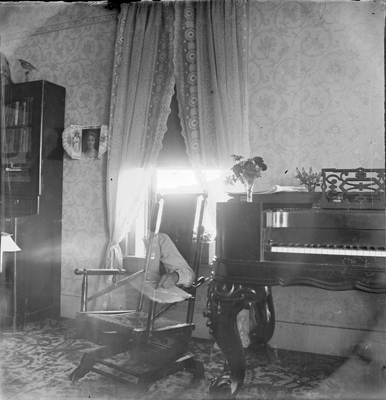
This photograph suggests Kennicott was experimenting with long exposures. It appears she had the poser sitting in the rocking chair leave the scene mid-shot. The end result is this almost eerie image of a ghost-like figure.
When you look at the photographs as a set, they also document the passage of time as evidenced by the changing decor of the house (the wallpaper!) and Anna aging through the years. Her hairstyle went from braids to an elegant bun. The photographs over this period also demonstrate Eugenia’s developing artistry as she became more comfortable with the camera and began experimenting with lighting, composition, and subject matter.
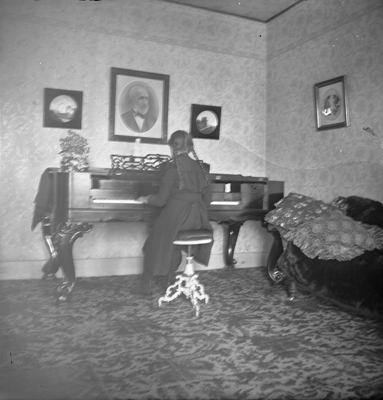
Kennicott’s photographs depict the passage of time. These photos shot circa 1899 and 1903 show changes in Anna’s clothing and hairstyles as she got older and the house decor such as wallpaper updated.
In 1900, Frank Kennicott sold the ranch and built a house in Canon City. Soon after he repossessed the ranch and split the family’s time between the two houses. After her father passed away in 1914, Eugenia continued to live with her mother. Her struggle with tuberculosis continued throughout her life and she often traveled to Chicago for relief or stayed at a sanitarium in Colorado Springs. Eugenia died in 1934.
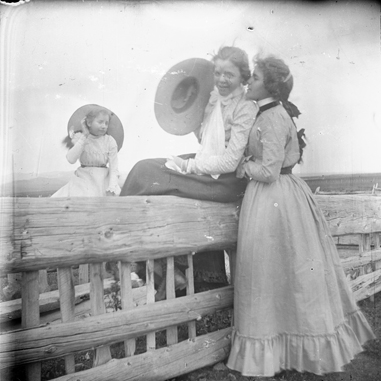
Eugenia often posed her sister Anna and their friends. Eugenia titled this photo “Girls Gossiping- Anna posed as the girl doing the gossiping."
So, could a camera be considered a toy? I think the answer all depends on the photographer and his or her intent. After examining the photographs in detail, my interpretation is that Eugenia didn’t see the camera as a toy, but as a tool for exploring the world around her. Photography offered her a creative outlet and means of interacting and playing with her sister and friends, without having to physically be part of their play. Eugenia thoughtfully composed her shots, picked her subject matter, and developed the images with care. The result is a wonderful collection of photographs that give us a sense of what life might have been like for a girl growing up in the countryside of Colorado at the turn of the century.
See more photos from the Eugenia R. Kennicott photographs collection.

